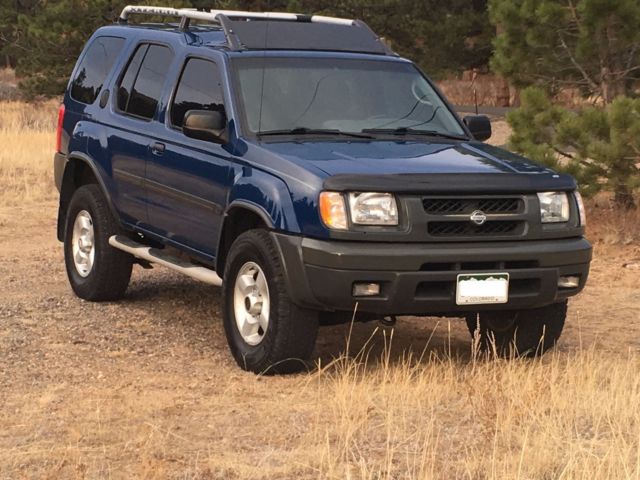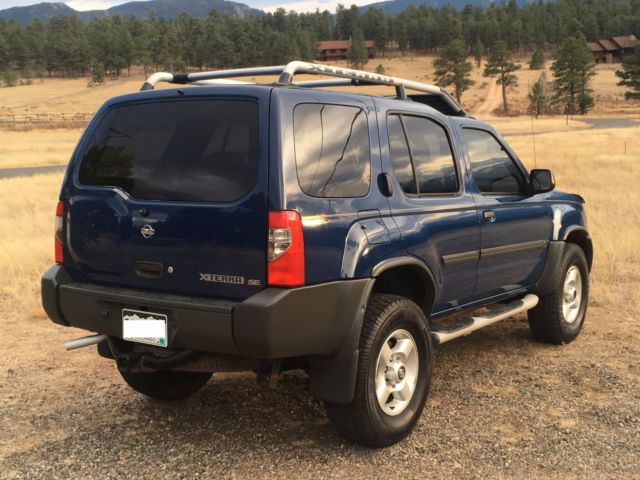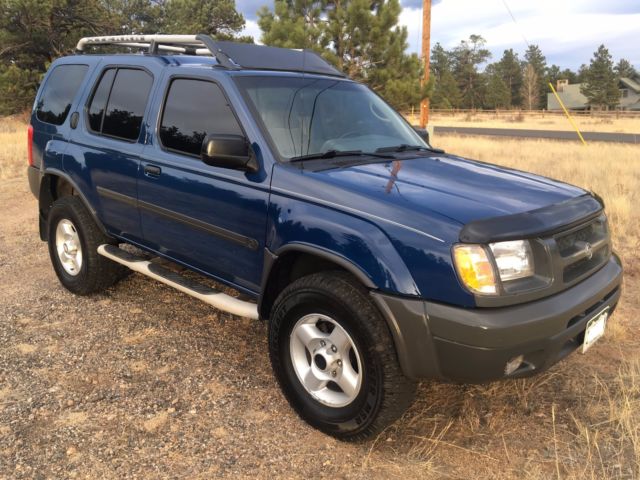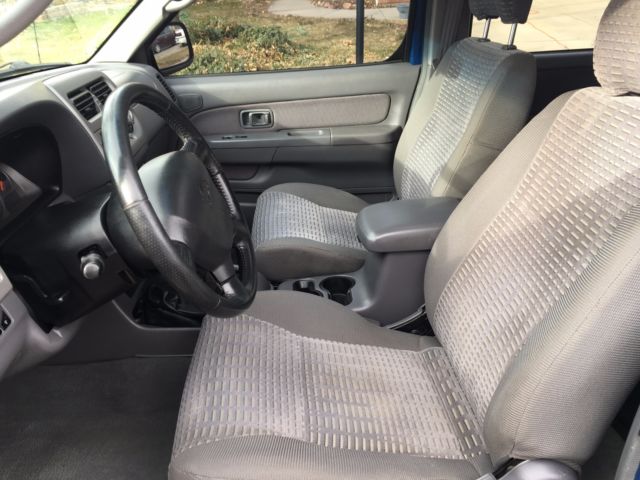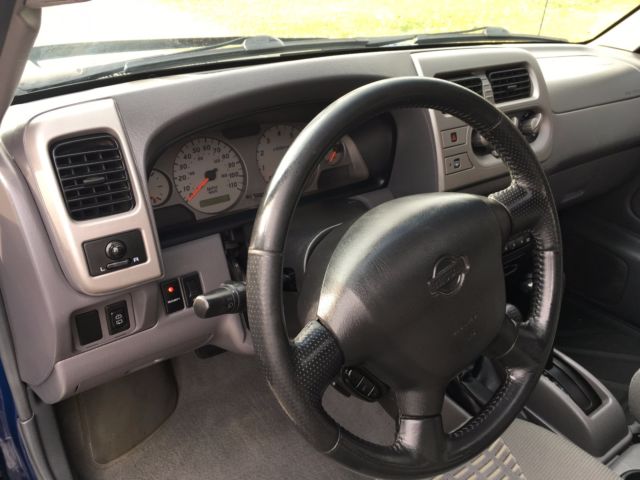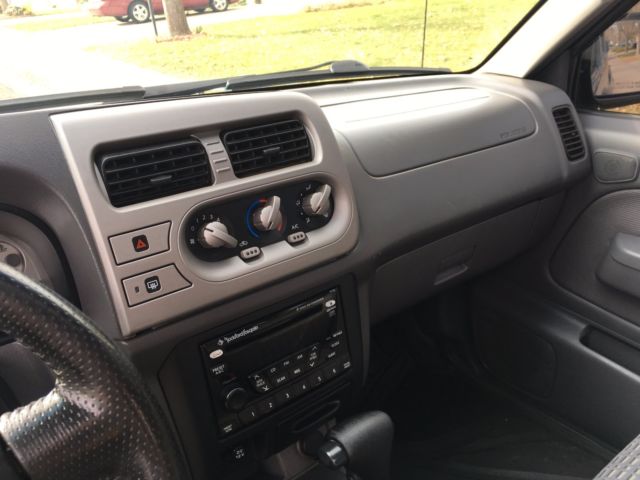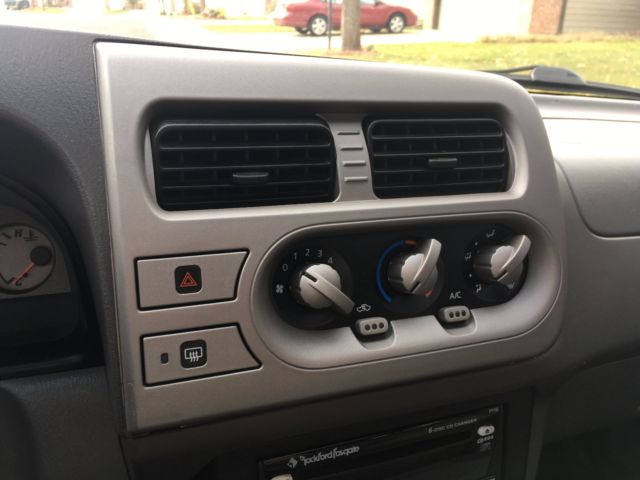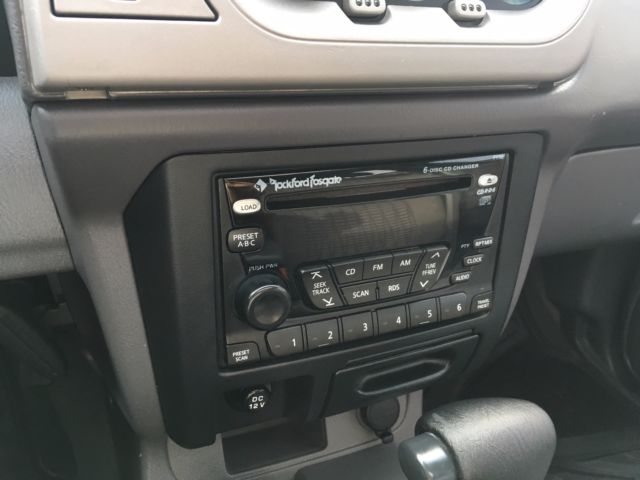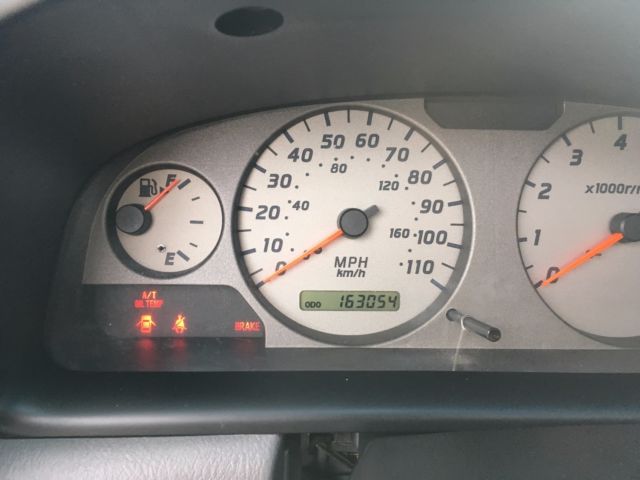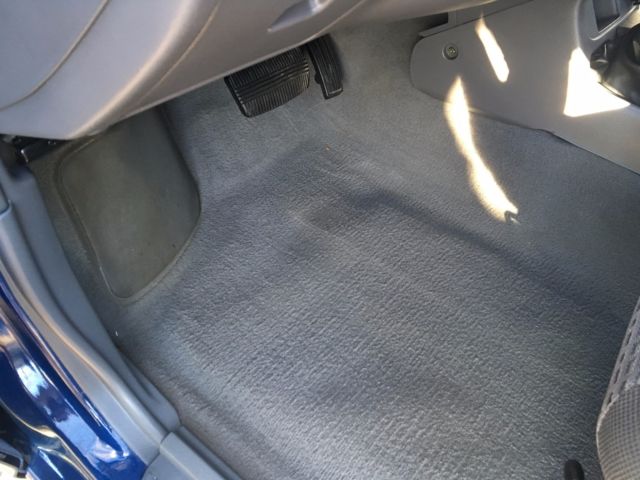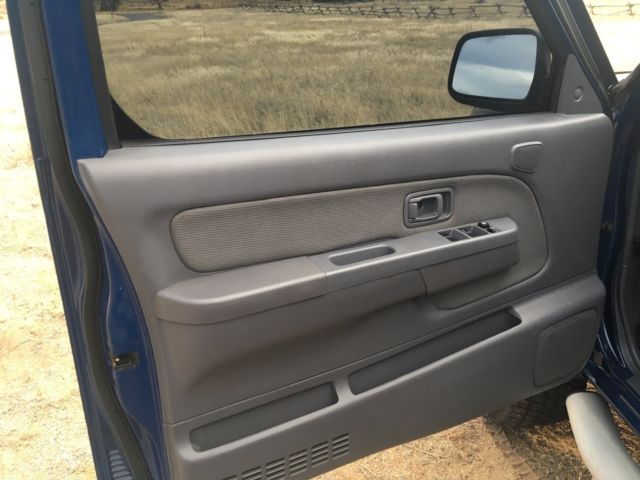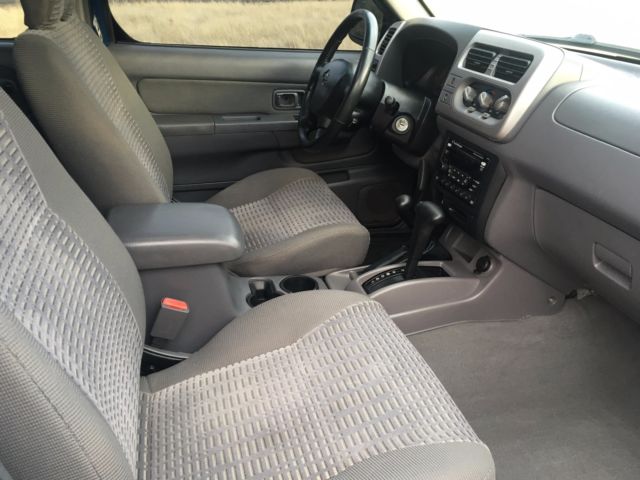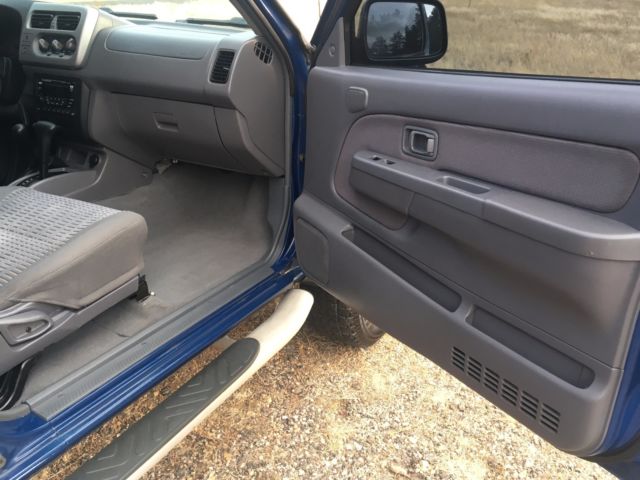Beautifully Reconditioned Nissan Xterra SE. Rare. Fully Loaded.
- Make: Nissan
- Model: Xterra
- SubModel: SE (Special Edition)
- Type: SUV
- Trim: SE
- Year: 2001
- Mileage: 163,000
- VIN: 5N1ED28Y81C549795
- Color: Blue
- Engine size: VG33E
- Number of cylinders: 6
- Power options: Power Steering, Air Conditioning, Cruise Control, Power Locks, Power Windows
- Fuel: Gasoline
- Transmission: Automatic
- Drive type: 4WD
- Interior color: Gray
- Safety options: Anti-Lock Brakes, Driver Airbag, Passenger Airbag
- Options: AM/FM Radio, Moonroof, Alloy Wheels, Security System, 6 Disc CD Player, Bucket Seats, Fog Lights, Rear Window Wiper, Remote Keyless Entry, Rear Window Defroster, Tinted Glass, 4-Wheel Drive, CD Player, Sunroof
- Vehicle Title: Clear
- Interested?
2001 Nissan Xterra SE Description
I’ve owned this vehicle for just over 3 years. I’ve always been a Toyota owner, before owning this vehicle, but I accepted it as a trade from a friend. Needless to say, I fell in love with it! This is a uniquely equipped vehicle. It's light, versatile, and surprising powerful, compared to the larger, overweight Toyota 4-Runner (sorry Toyota).
This vehicle is a Special Edition vehicle, as is evident from the “SE” label on the back lift door. It is fully loaded with sunroof (rare) and has a removable cover for the sunroof, doubling as a moonroof.
[VIDEO PRESENTATION OF THIS VEHICLE]
I love these vehicles so much, I decided to recondition them for others, restoring them to like-newcondition. This vehicle is smoke-free and has been kept in a garage for most of its life. It’s always had regular maintenance and was recently reconditioned, so the new owner would enjoy a maintenance-free experience for a long time to come.
A common problem with these vehicles, is the head gaskets fail. Toyota had the same problem with the 3.0 liter engine in their 4-Runner and pickup trucks, but Toyota chose to warranty the head gaskets on ALL their vehicles and Nissan did not (shame on Nissan). The head gaskets on this vehicle were replaced, for a worry-free future. :)
ENGINE TESTED AND IN EXCELLENT HEALTH
I have compression tested the engine (see video below), to verify the current health of the engine. The test yielded excellent results (see below). Nissan publishes the compression test results of this engine (VG33E) in "New" condition, with zero miles, at 173 psi.
The test results on this engine at 163,000 miles is as follows:
- Cylinder #1 – 165 psi
- Cylinder #2 – 165 psi
- Cylinder #3 – 165 psi
- Cylinder #4 – 157.5 psi (the gauge reflected a reading between 155 and 160 psi).
- Cylinder #5 – 165 psi
- Cylinder #6 – 165 psi
* Note: Cylinder #4 is lower by 7.5 psi. This is not uncommon and the results of a compression test are generally accepted be "good" as long as any one cylinder does not differ from another by more than 15%. Cylinder #4 is lower by 4.5% (157.5 psi compared to 165 psi).
As an engine accumulates miles, these values will go down. Nissan also publishes the minimum acceptable compression value for this engine at 125 psi. The engine in this vehicle has compression levels that are lower by only 4% from "New" levels. It has a long life ahead of it.
[VIDEO OF COMPRESSION TEST]
I wanted a vehicle that was quiet, tight, and complete. Many Xterra available for sale are missing parts here and there, and have rattles and squeaks. This vehicle is complete; nothing missing or broken and there are no rattles or squeaks. It is nice and tight and well-conditioned; in like-new condition.
RECONDITIONING & MAJOR REPAIRS
- In 2013, at 120,000 miles, thehead gasketswere replaced (to correct the common failure). At that time, this vehicle also received:
- Newexhaust manifolds (both the driver and passenger side). This is another common failure on these engines. Most people don't know they are cracked, but affects the performance of the engine.
- Newtiming belt,water pump,valve cover gaskets,cam seals, andthermostat.
- In 2016, at 163,000 miles, I decided to recondition the entire vehicle so that it would not requireanymaintenancefor the new owner.I changed the timing belt (again), water pump and tensioner (again), so that it would be good for another 105k miles (recommended by Nissan). I suggest changing the timing belt every 85k miles, though, because there are many reports of timing belts breaking at 100k miles. This is an "interference" engine, so if the belt breaks during operation there is a high likelihood the engine will be damaged.
PREVENTATIVE MAINTENANCE
- New iridium spark plugs (super expensive to install at the dealership due to the location of Cylinder #6). Iridium plugs last longer than the original equipment platinum plugs. Labor costs are really high to replace these, so the iridium plugs will last longer than the platinum plugs.
- New spark plug wires
- Newer 1000 CA battery (April 2013). It has been tested in good condition. I have a newer battery (April 2016) if you prefer, but this one is extra powerful for cold weather. Your choice. :)
- Fully re-charged air conditioning (AC) system
- New distributor cap
- New distributor rotor
- New front brakes. Ceramic Pads and Rotors.
- Cleaned and re-packed grease in 4X4 hubs and bearings.
- New rear brakes: New brake shoes and machined drums (most people fail to replace the rear brakes, causing premature wear on the front brakes).
- Recent steering alignment
- Recent tire balancing (tires go out-of-balance, normally, as they wear)
- New window regulators/motors in three doors (common problem). Windows are super-fast up and down again! (common problem)
- New window guides/weather seals in two front doors (common problem).
- New intake air filter
- New cabin air filters (x2)
- New fuel filter
- New steering stop bolt caps (eliminates the loud screeching noise when backing out of your driveway!). These are always overlooked.
- Re-sealed fog lights (common problem, causing them to rust out).
EVERY FLUID HAS BEEN CHANGED
- Engine oil
- Transmission fluid
- Coolant (cooling system fluid)
- 4X4 transfer case fluid (gear oil)
- Power steering fluid
- Front and rear axle fluids (gear oil)
- Brake fluid
WINDOWS & DOORS
The windows typically operate very slowly in these vehicles, or even stop working all together.
The window regulators/motors and the rubberwindowchannel/weather seals are a common failure point. Nissan recalled the regulators/motors back in 2002, but they did NOT solve the problem with their parts. They simply replaced them with the same part that wore out again and again. Many people have had to replace them several times.The rubber window channels/weather seals dry up, become hard, and crack,causing high friction points in the operation of the windows. This causes premature failure in the window operation, requiring replacement of the regulators/motors.
To fix the actual problem, I replaced the regulators/motors (in three doors; Front driver-side and passenger-side, and rear driver-side) with an after-market part,and replaced the window rubber channel channels/weather seals in the front driver-side and passenger-side windows (drivers side is brand new, the passenger side was replaced with a good condition used seal from another one of my vehicles),andused a high-end Honda grease (Shin-Etsu) to lubricate the all the rubber channels and regulators/motors.
EXTERIOR & BODY
The exterior paint has been fully machine polished (5 stage process), including clay bar, scratch removal, polish, pre-wax preparation with Dodo Juice, and synthetic paint sealant (extra protection for the winter). All polishing materials are professional grade.
I’ve also reconditioned the exhaust pipe and muffler. The mufflers rust out on these vehicles and the aftermarket replacement mufflers don't fit well. I restored the original one. I removed the outer shell of the muffler, sanded the muffler, and re-painted the original muffler and exhaust pipe with high temperature paint.
INTERIOR
Fully cleaned (3 stages), including deep surface degreaser, surface clean and shine, and lastly, an aviation grade protectant. I cleaned the seats, upholstery, carpet, seat belt straps, and door panels. The carpets were machine cleaned and hand conditioned.
I also corrected the paint failure that occurs on the center dash area surrounding the climate controls and around the vent on the driver-side (common failure). This is the largest eye sore that occurs on the interior of this vehicle.
I have replaced the paper-cone speakers that commonly occur on these vehicles too.
I have also installed a better display on the 6 disc CD player. The display on the Rockford Fosgate stereo is prettier to look at! :
FEATURES
- 6-Disc CD player with all 6 working speakers (CD player and speakers are common failure on these vehicles).
- Sunroof/Moonroof
- Fog Lights
- Security System
- Remote Keyless Entry
- Cargo Security Cover
- Carpeted Floor Mats
- Rubber Floor mats (for winter)
- 16" Alloy Wheels
- First Aid Kit (made by Nissan)
- Windshield Sunshade (it's hard to find one that fits)
WINTER READY FEATURES
- 1000 cranking-amp battery
- Anti-corrosion on battery terminals
- Over-sized studded snow tires (P265 75R 16)
- New Bosh wipers (upgraded size on the driver side for added visibility).
- RainX glass treatment on all exterior glass and mirrors
- Winter rubber floor mats
- De-Icer washer fluid
OTHER FEATURES
- Tow Package (Trailer Hitch with electrical connection for trailer lights)
- Full Size Spare Tire
- Factory Jack/Tools
- Factory manuals
UPGRADES
- Cabin air box is updated to accept replaceable air filters (Nissan did not equip the 2001 model with this feature)
- Adjustable rear ride-height for added comfort and improved fuel mileage.
- Fog lights: electrical connectors converted for use with bulbs that are available in auto-parts stores (factory wiring only accepts expensive Nissan bulbs).
- Rockford Fosgate stereo display. The stereo is NOT a Rockford Fosgate (RF) stereo. I use the face-plate from the RF stereo, because the display on that stereo is much nicer than the standard stereo. The RF stereo actually outputs less power than the standard stereo, because it also requires an external amplifier to assist the stereo. The RF stereo was not available until 2002, but it looks so nice that I simply swap the face-plate from the RF stereo onto the standard stereo for the best sound and display! :)
- Bug Shield (on the front hood)
- Pressure release Radiator Cap (helpful when you want to check the level of the coolant, while the engine is hot)
- Front mud flaps are carefully trimmed to accept over-sized tires
KNOWN ISSUES
- This vehicle has been reported as having been involved in an accident, while in the care of the previous owner; a friend of mine. I was not able to determine any physical evidence from the accident, but found a spare passenger-side turn signal lamp assembly in a box after I purchased the vehicle.
- The studs on the snow tires are worn down considerably. I drove the vehicle on the snow tires during the warm summer months. The tread on the tire is still good, but many of the studs are worn flat.
- This vehicle has a slow leak in the rear main seal. It's not enough to drip on you driveway or garage floor, but it is slowly leaking. It is not cause for immediate concern, but could be an annoyance. It's about a $1000 repair at any respectable service center, but I decided it was not a big enough issue to warrant replacement at this time. I have added a seal conditioner to the oil, in attempt to fix the issue or delay the need to address this problem. I don’t have enough miles on the vehicle yet to determine if it has worked, but I typically find these things do not work to my satisfaction.
- Exterior paint is flaking off of the rear lift door. This is another common issue with these vehicles. It is my intent to correct this issue before the vehicle is shipped to its new owner.
- There is a small ding in the fuel refill door. There is also some paint chipping of the top of this little door and inside the door around the fuel neck.
- There are two small areas under the rear bumper with surface rust. They are about the size of a silver dollar.
- The on-board computer suggests that there is a problem with the knock-sensor or sensor wiring (see video below). This is a common problem with these vehicles. Some people by-pass the sensor all together (not recommended) and some people relocate the sensor (also not recommended). Bypassing the sensor cause reduce the engine's ability to protect the engine if you get a bad tank of gas or otherwise encounter a scenario in which the engine begins to knock and the computer needs to protect the engine from damage (by adjusting the ignition timing). Relocating the sensor may result in the sensor not being able to accurately determine the condition of the engine "knocking", if the sensor is in a different location. The location of the sensor is important to its ability to detect specific noise frequencies in the engine that would cause the computer to adjust timing and protect the engine. Typically doing "nothing", is the best course of action as an alternative to replacing the sensor or addressing the wiring. The sensor is difficult to get to and thus is a costly repair. The computer will record the error, even when the condition is no longer present. It is generally accepted to be safe to drive this vehicle (with the VG33E engine) with a sensor that is not working. This is NOT recommended on Xterras with a super-charged engine (VG33ER).
[DIAGNOSTICL DETECTION OF TROUBLE CODES IN ON-BOARD COMPUTER]
VEHICLE HISTORY REPORT
An official Carfax Vehicle History Report is available upon request.
EMISSIONS
Current certificate of Colorado emissions will be provided as verification it will pass emissions.
I am happy to assist in arranging shipping options for the buyer.
Thanks for looking!
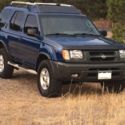 Reconditioned, Beautiful, & Blue. Fully Loaded. Comfortable. Winter Ready.
Reconditioned, Beautiful, & Blue. Fully Loaded. Comfortable. Winter Ready.
Mileage: 164,000
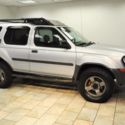 2002 Nissan Xterra 5-SPEED RARE FIND
2002 Nissan Xterra 5-SPEED RARE FIND
Mileage: 184,875
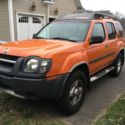 2003 Nissan Xterra 4x4 - ATOMIC ORANGE - 142k - RARE
2003 Nissan Xterra 4x4 - ATOMIC ORANGE - 142k - RARE
Mileage: 141,500
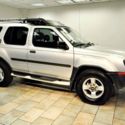 2004 Nissan Xterra SE 5-SPEED LOW MILES RARE FIND
2004 Nissan Xterra SE 5-SPEED LOW MILES RARE FIND
Mileage: 115,556
 2001 NISSAN XTERRA SE LOW MILES RARE COLOR WARRANT
2001 NISSAN XTERRA SE LOW MILES RARE COLOR WARRANT
Mileage: 94,716
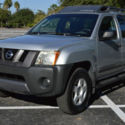 2005 Nissan Xterra Off-Road SE 4X4 V6 HIGH BID WINS LOADED SUV BID TO WIN IT !!
2005 Nissan Xterra Off-Road SE 4X4 V6 HIGH BID WINS LOADED SUV BID TO WIN IT !!
Mileage: 120,526
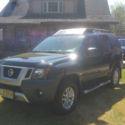 2014 Nissan Xterra S Sport Utility 4-Door 4.0L BEAUTIFULL LOADED!!!!!!
2014 Nissan Xterra S Sport Utility 4-Door 4.0L BEAUTIFULL LOADED!!!!!!
Mileage: 22,338
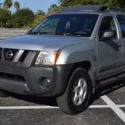 2005 Nissan Xterra Off-Road SE 4X4 V6 HIGH BID WINS LOADED RACKS GOOD MILES BID!
2005 Nissan Xterra Off-Road SE 4X4 V6 HIGH BID WINS LOADED RACKS GOOD MILES BID!
Mileage: 121,415
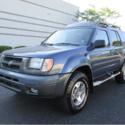 2000 Nissan Xterra SE 4X4 Loaded 1 Owner Dealer Serviced Extra Clean Great Find
2000 Nissan Xterra SE 4X4 Loaded 1 Owner Dealer Serviced Extra Clean Great Find
Mileage: 134,602
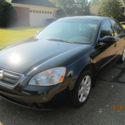 2002 NISSAN ALTIMA FULLY LOADED-PERFECT-NEW ENGINE-FULLY REFURBISHED
2002 NISSAN ALTIMA FULLY LOADED-PERFECT-NEW ENGINE-FULLY REFURBISHED
Mileage: 202,000
